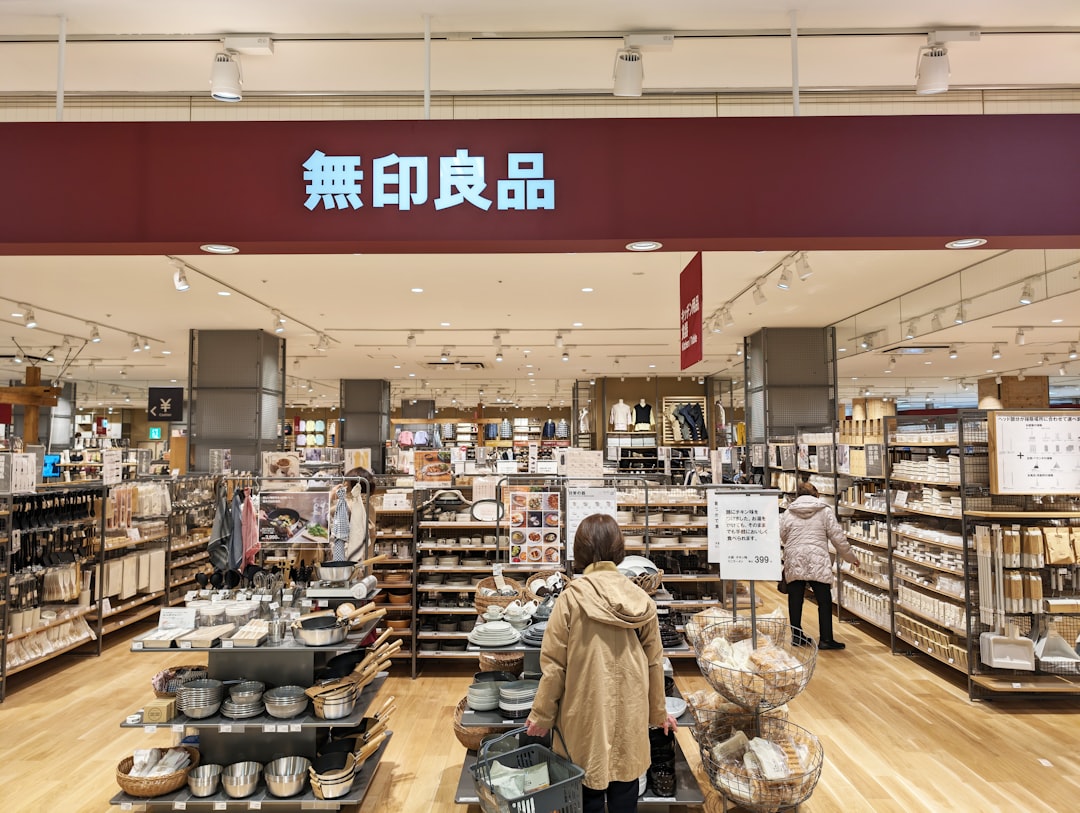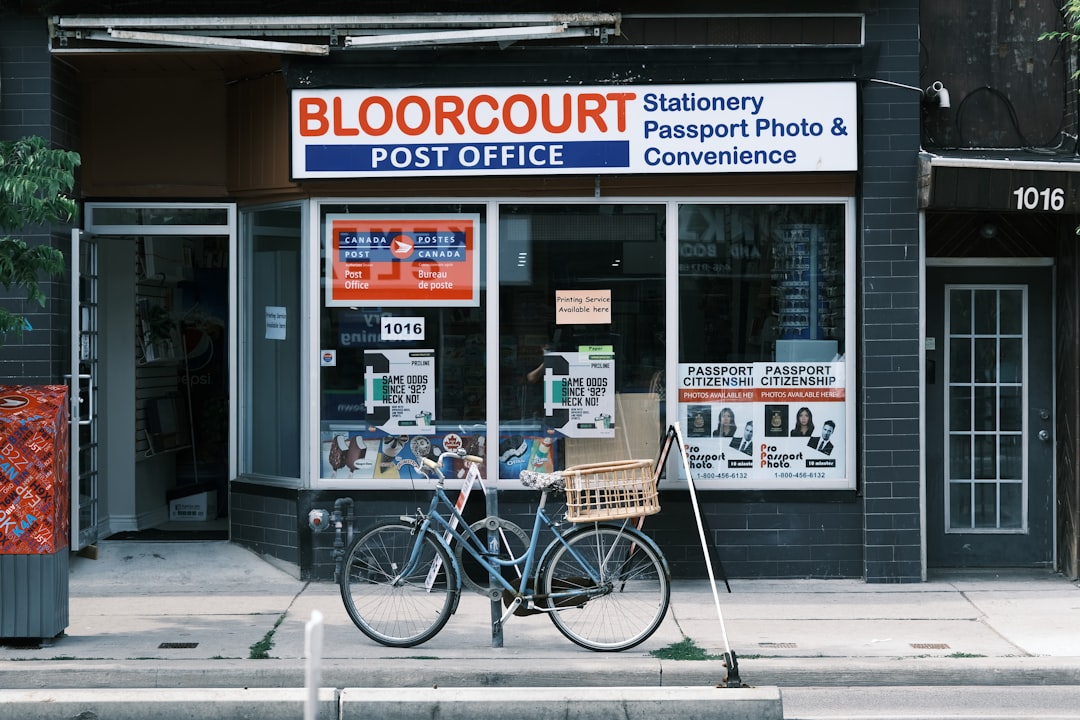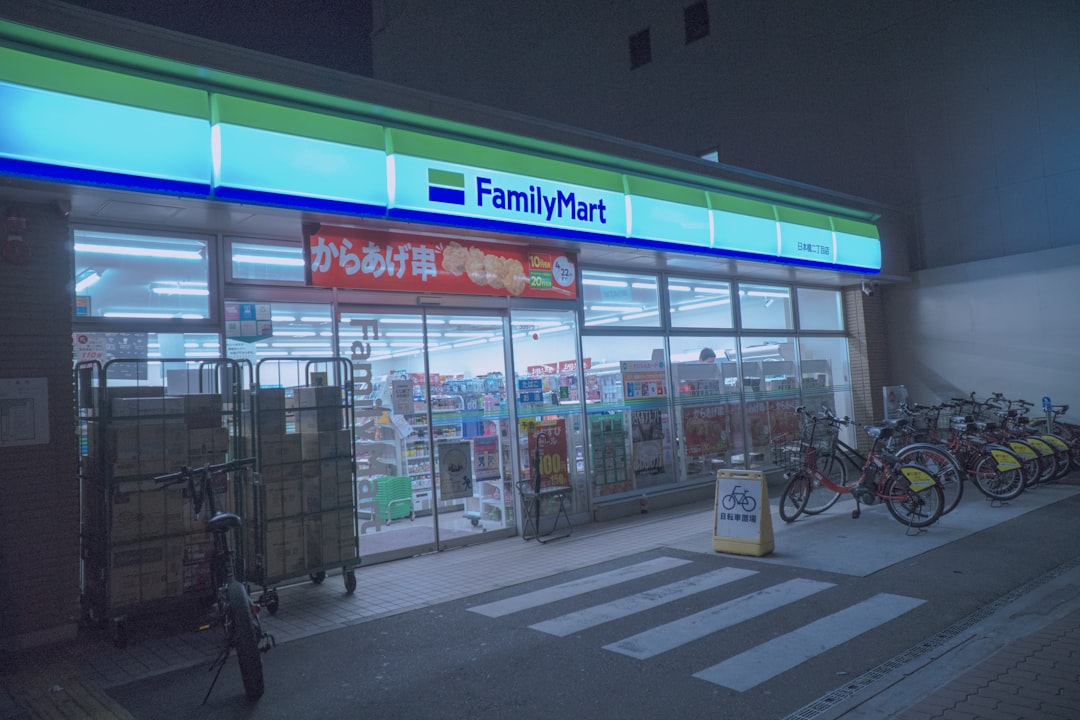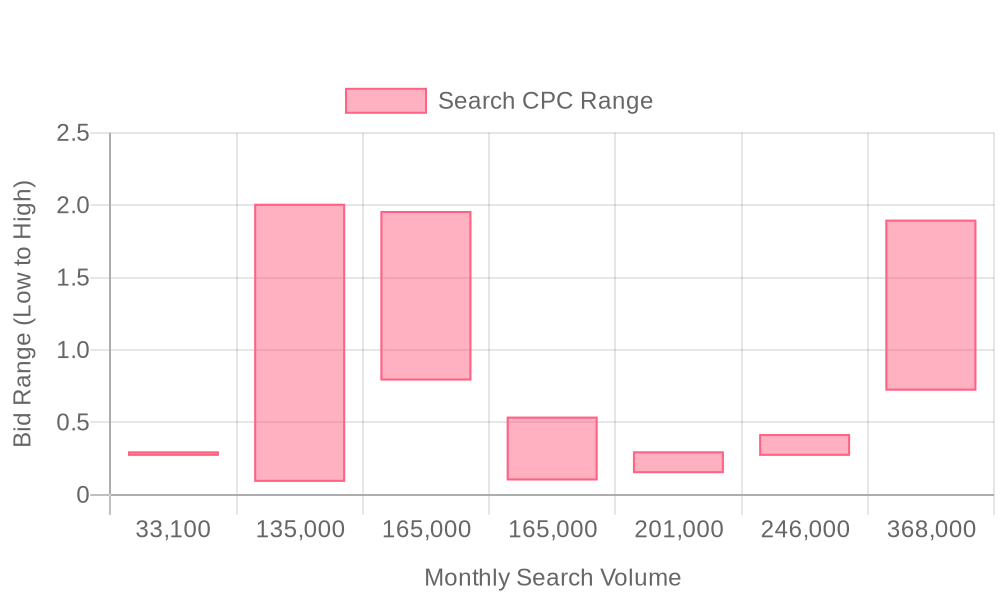
Supercharge your lead generation with a FREE Google Ads audit - no strings attached! See how you can generate more and higher quality leads
Get My Free Google Ads AuditFree consultation

No commitment
Supercharge your lead generation with a FREE LinkedIn Ads audit - no strings attached! See how you can generate more and higher quality leads
Get My Free Google Ads AuditFree consultation

No commitment
Supercharge your lead generation with a FREE Meta Ads audit - no strings attached! See how you can generate more and higher quality leads
Get My Free Google Ads AuditGet My Free LinkedIn Ads AuditGet My Free Meta Ads AuditFree consultation

No commitment
Supercharge your lead generation with a FREE Google Ads audit - no strings attached! See how you can generate more and higher quality leads
Get My Free Google Ads AuditFree consultation

No commitment
Navigating the competitive landscape of discount retail stores is fraught with challenges, particularly in identifying and retaining high-value prospects. With many potential customers starting their journey online, visibility and engagement are key. Google Ads provides a strategic edge, helping retailers capture these prospects by targeting shoppers with precision and ultimately driving footfall to physical locations as well. By intercepting potential customers at the moment of intent, retailers can address the common challenge of missing out on high‑value prospects who browse but do not convert immediately.

Modern discount store marketers consistently outperform by leveraging data-driven Google Ads campaign strategies tailored to distinct customer segments. Personalization, real-time promotional updates, and seamless online-to-offline attribution are critical to driving conversions and optimizing budget in competitive retail environments.
Successful lead generation for discount stores requires a deep understanding of shifting shopper intent and rapid adaptation to demand signals. Integrating unified data across channels enables revenue teams to pinpoint high-value prospects, synchronize ad messaging, and maximize return on every advertising dollar. For a deeper dive into effective retail ad strategies, check out Google Ads for Retail for practical insights.
A structured approach to campaign execution, underpinned by unified data and dynamic audience management, empowers discount store marketers to outperform generic advertising efforts and consistently capture high-intent leads. For a personalized walkthrough of advanced solutions, start Sona onboarding.

Discount retailers operate in a hyper-competitive space where every impression and click must translate into measurable outcomes. Google Ads delivers targeted access to budget-sensitive shoppers, supporting high-velocity sales cycles and inventory turnover essential for discount models. This approach empowers retailers to capture demand at the precise moment a consumer seeks value, ensuring marketing dollars reach shoppers with the highest intent to purchase.
Precision targeting within Google Ads enables discount stores to focus spend on genuine prospects rather than casting a wide net over unqualified, anonymous web traffic. Solutions such as Sona Identification support the identification of individual visitors and their companies, helping marketers move beyond surface-level engagement, pinpoint high-potential leads, and guide them into tailored campaigns.
With dynamic audience segmentation, as leads progress down the funnel, advertising lists update in real time, keeping spend aligned with the most conversion-ready segments. For more on audience-based strategies, BrightBid's guide provides a deeper look at this trend.
The ability to instantly update ad copy through ad customizers adds urgency to promotional messaging, driving action during limited-time sales or flash events. Geolocation targeting further enhances visibility by directing local shoppers to both online offers and physical store locations, maximizing reach across digital and real-world channels. Advanced analytics and conversion tracking unify online and offline engagement metrics, helping discount stores attribute revenue to the right campaigns and optimize budget allocation for both digital and in-store activities.
Google’s ecosystem, when paired with enriched audience data, allows for seamless synchronization between Google Ads and leading CRM systems. This ensures that lead and customer lists remain accurate and actionable, fueling smarter discount marketing strategies and more effective promotions for discount stores. The result is a data-driven, adaptive advertising approach that keeps pace with fast-moving retail trends and consumer expectations.

Discount store revenue teams unlock measurable growth by strategically identifying and prioritizing overlooked demand pockets. Uncovering new, high-value prospects requires more than broad targeting; it demands precise, data-driven tactics that adapt in real time to shifts in consumer intent and competitor activity.
To accelerate the process of uncovering new demand pockets, start with Sona and unlock actionable insights tailored to your retail growth goals.

Tailored audience segmentation unlocks higher ROI for discount stores by ensuring each advertising dollar reaches the most relevant shoppers. Segmentation replaces generic, catch-all campaigns with targeted strategies that align with the motivations of distinct buyer groups.
Integration with unified data platforms enables marketers to identify not only who visits their site, but also which companies or customer cohorts express the strongest intent. Solutions such as Sona Audiences support the identification and activation of high-value segments for more effective ad targeting.
TJ Maxx mobile ads demonstrate how intent and event-based targeting can boost in-store conversions for discount retailers.
When intent signals are unified across web, CRM, and offline channels, discount stores can retarget lapsed buyers or up-sell to loyal customers, maximizing both acquisition and retention.
Real-time syncing of audience segments back into Google Ads, along with advanced conversion tracking, enables marketers to measure true campaign ROI and refine their approach continuously. For more insights on maximizing performance, check out our guide on Google Ads ROAS.
This creates a closed-loop system where every advertising touchpoint is informed by the most current, actionable data, powering ongoing growth for discount store advertisers. To get started with smarter segmentation, book a demo and see how these strategies can work for your brand.

| Industry | Keyword | Monthly Search Volume | Competition Level | Low Bid | High Bid |
| Discount Stores | macys coupon code | 33100 | MEDIUM | 0.27 | 0.3 |
| Discount Stores | walmart promo code | 135000 | LOW | 0.09 | 2.01 |
| Discount Stores | discount stores | 165000 | LOW | 0.79 | 1.96 |
| Discount Stores | target promo code | 165000 | LOW | 0.1 | 0.54 |
| Discount Stores | macys coupon | 201000 | MEDIUM | 0.15 | 0.3 |
| Discount Stores | macys promo code | 246000 | MEDIUM | 0.27 | 0.42 |
| Discount Stores | lowes promo code | 368000 | MEDIUM | 0.72 | 1.9 |
Precise keyword strategy is a decisive edge for discount stores aiming to maximize return on ad spend. A targeted approach not only increases engagement but also ensures ads reach audiences most likely to convert, cutting through wasted impressions and irrelevant clicks.
A sophisticated keyword strategy, supported by accurate attribution and CRM-ad sync, links every click and conversion back to the original search term and user profile. This granular visibility empowers discount stores to iterate rapidly, refine targeting, and deploy budget where it drives measurable results.
Discount retailers require a campaign structure that aligns precise targeting with ongoing refinement. A disciplined, data-driven framework ensures each advertising dollar works harder, moving beyond guesswork to sustained, measurable growth. This stepwise approach addresses the need for relevance, urgency, and efficiency in every phase of the buyer journey—delivering practical value for revenue teams aiming to outperform in crowded retail segments.
A well-researched keyword list forms the backbone of any effective Google Ads for discount stores strategy. Integrating modifiers like “discount,” “clearance,” and “sale” boosts relevancy, ensuring ads surface for shoppers explicitly seeking deals. Mapping intent-rich terms to product categories helps capture both high-volume and high-conversion search traffic, while negative keywords filter out irrelevant clicks and protect budget efficiency.
B2B marketers can enhance this process by identifying not just anonymous clicks but also the specific companies and buyer personas behind each search. Platforms that offer visitor identification capabilities allow teams to refine keyword bidding based on actual account-level engagement, giving a competitive edge in budget allocation. These insights inform which keywords warrant higher bids as in-market demand shifts, enabling smarter, real-time optimization.
Ad copy for discount store advertising must balance urgency and value. Time-sensitive language—such as “Today Only” or “Limited Stock”—drives faster action, while clear calls-to-action (“Shop Clearance Now,” “Unlock Extra Savings”) keep the message direct and conversion-focused. Highlighting unique selling propositions like exclusive offers or bulk discounts differentiates the brand in a saturated marketplace.
Dynamic audience data further elevates ad copy effectiveness. As leads move through the funnel, marketers can tailor ad content to reflect their stage: first-touch visitors see broad value messaging, while known accounts receive personalized offers based on previous site behavior. This dynamic approach ensures messaging remains relevant and compelling for each segment, increasing both click-through and conversion rates. Shopping ads best practices provides a deeper look at this trend.
Landing pages for Google Shopping ads and promotions for discount stores must reduce friction from click to conversion. Streamlining the user journey—by featuring prominent deal banners, simplified navigation, and easy checkout—keeps shoppers focused on action. Including trust signals like customer reviews or best-seller badges builds confidence, while mobile-first design ensures seamless access for on-the-go buyers.
Integrating advanced conversion tracking across both online and offline touchpoints provides a comprehensive view of campaign performance. For more insights on connecting ad data with revenue, check out our guide on attribution models. When platforms unify CRM data with Google Ads events, marketers can attribute revenue to specific ads, keywords, and audience segments. This clarity empowers teams to double down on the highest-performing tactics and adjust landing page content based on real purchase outcomes, not just clicks.
Continuous optimization is essential for sustained campaign performance in online advertising for retailers. Automated reporting and custom alerts help teams monitor KPIs like ROAS, CPA, and conversion volume in real time. Regular bid adjustments and budget reallocations keep spend focused on the most profitable audiences and products, ensuring ongoing alignment with business goals.
As market conditions shift, dynamic audience syncing between CRM and ad platforms ensures that only in-market leads receive active targeting. This reduces wasted impressions and maximizes the impact of every advertising dollar. Intent retargeting builds on these strategies, making it possible to pivot quickly—whether reallocating budget to high-performing channels or launching new creative based on emerging trends—so that campaigns never plateau and always drive meaningful results.
Expanding a discount store’s reach requires more than simply increasing ad spend; it demands a holistic approach that multiplies the impact of every marketing dollar. Leveraging coordinated, data-driven strategies ensures that each campaign resonates with the right audience and drives measurable growth in both digital and in-store performance.
Retailers who unify these tactics with precise targeting and actionable insights move beyond fragmented marketing to create a scalable, high-performing presence. Data-driven audience building ensures that discount store advertising adapts to customer behavior, maximizing every opportunity for engagement while minimizing wasted spend. As marketing and sales teams bridge gaps between platforms and data sources, they unlock new growth potential in the highly competitive discount retail sector.
Running successful Google Ads for your discount store doesn’t have to feel like guesswork. With the right strategies, you can turn clicks into customers and promotions into profits—all while maximizing your budget.
We’ve covered how to leverage high-intent keywords, craft compelling ad copy, and use smart targeting to reach bargain-hunting shoppers. By focusing on urgency, value, and relevance, you can stand out in a competitive market and drive more foot traffic (or online sales) to your store.
Imagine your ads not just generating impressions but consistently filling your aisles or cart with eager buyers. The tools and tactics are here—now it’s time to put them into action and watch your discount retail business thrive.
Ready to see how data-driven advertising can transform your results? Start a free trial to experience the platform and its capabilities.
Best practices include leveraging data-driven campaign strategies, personalizing ad messaging, ensuring a consistent ad and landing page experience, and using real-time promotion management to synchronize inventory, pricing, and promotional messaging across ads and product feeds.
To effectively promote discounts, use tailored ad messaging that highlights time-sensitive discounts, dynamically insert promotional pricing, and ensure ads remain relevant by updating as leads move through the funnel. Additionally, leveraging Google Merchant Center for real-time promotion management can enhance effectiveness.
Allocate your budget by focusing spend on genuine prospects using precision targeting, and continuously optimize based on conversion tracking and advanced analytics to ensure that marketing dollars reach shoppers with the highest intent to purchase.
To create a Google Shopping ad, you need to showcase specific products with rich images, pricing, and promotional details in search results, and integrate with platforms like Google Merchant Center for real-time inventory and price updates.
Promotions that are time-sensitive, such as limited-time offers or flash sales, work best as they add urgency to promotional messaging and drive action. Geolocation targeting can also enhance promotions by directing local shoppers to both online offers and physical store locations.
Join results-focused teams combining Sona Platform automation with advanced Google Ads strategies to scale lead generation

Connect your existing CRM

Free Account Enrichment

No setup fees
No commitment required

Free consultation

Get a custom Google Ads roadmap for your business
Join results-focused teams combining Sona Platform automation with advanced Meta Ads strategies to scale lead generation

Connect your existing CRM

Free Account Enrichment

No setup fees
No commitment required

Free consultation

Get a custom Google Ads roadmap for your business
Join results-focused teams combining Sona Platform automation with advanced LinkedIn Ads strategies to scale lead generation

Connect your existing CRM

Free Account Enrichment

No setup fees
No commitment required

Free consultation

Get a custom Google Ads roadmap for your business
Join results-focused teams using Sona Platform automation to activate unified sales and marketing data, maximize ROI on marketing investments, and drive measurable growth

Connect your existing CRM

Free Account Enrichment

No setup fees
No commitment required

Free consultation

Get a custom Google Ads roadmap for your business
Over 500+ auto detailing businesses trust our platform to grow their revenue
Join results-focused teams using Sona Platform automation to activate unified sales and marketing data, maximize ROI on marketing investments, and drive measurable growth

Connect your existing CRM

Free Account Enrichment

No setup fees
No commitment required

Free consultation

Get a custom Google Ads roadmap for your business
Over 500+ auto detailing businesses trust our platform to grow their revenue
Join results-focused teams using Sona Platform automation to activate unified sales and marketing data, maximize ROI on marketing investments, and drive measurable growth

Connect your existing CRM

Free Account Enrichment

No setup fees
No commitment required

Free consultation

Get a custom Google Ads roadmap for your business
Over 500+ auto detailing businesses trust our platform to grow their revenue
Our team of experts can implement your Google Ads campaigns, then show you how Sona helps you manage exceptional campaign performance and sales.
Schedule your FREE 15-minute strategy sessionOur team of experts can implement your Meta Ads campaigns, then show you how Sona helps you manage exceptional campaign performance and sales.
Schedule your FREE 15-minute strategy sessionOur team of experts can implement your LinkedIn Ads campaigns, then show you how Sona helps you manage exceptional campaign performance and sales.
Schedule your FREE 15-minute strategy sessionOur team of experts can help improve your demand generation strategy, and can show you how advanced attribution and data activation can help you realize more opportunities and improve sales performance.
Schedule your FREE 30-minute strategy sessionOur team of experts can help improve your demand generation strategy, and can show you how advanced attribution and data activation can help you realize more opportunities and improve sales performance.
Schedule your FREE 30-minute strategy sessionOur team of experts can help improve your demand generation strategy, and can show you how advanced attribution and data activation can help you realize more opportunities and improve sales performance.
Schedule your FREE 30-minute strategy sessionOur team of experts can help improve your demand generation strategy, and can show you how advanced attribution and data activation can help you realize more opportunities and improve sales performance.
Schedule your FREE 30-minute strategy session





Launch campaigns that generate qualified leads in 30 days or less.
